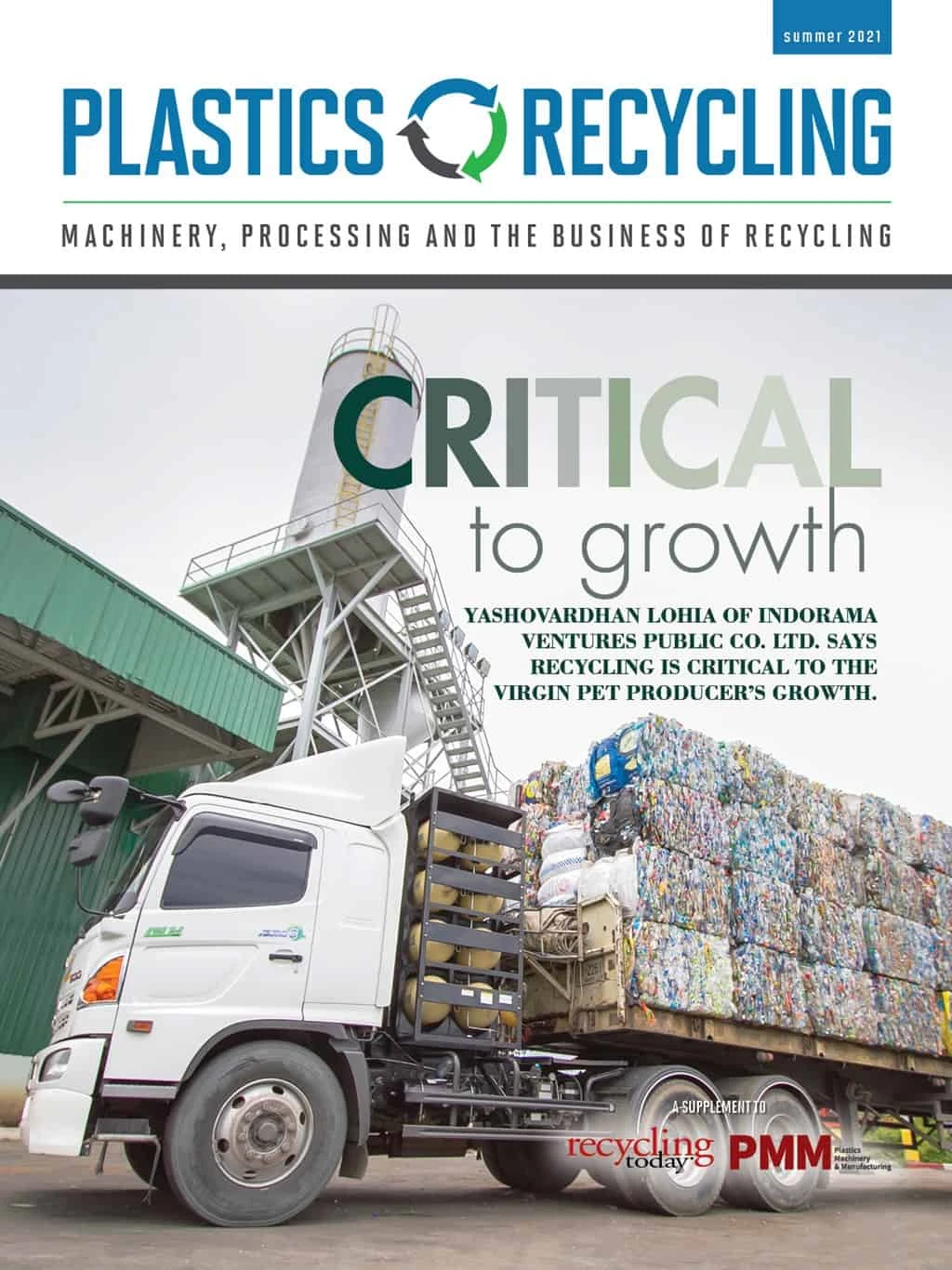
The announcement in June that 95 major brand owners and other organizations have agreed on a strategy to achieve a circular economy for plastic packaging sounds like good news for the recycling industry.
“The roadmap is designed to help U.S. industry leaders act on the significant, systemwide change needed to realize a circular economy for plastics by 2025,” says Emily Tipaldo, executive director of the U.S. Plastics Pact, a consortium led by The Recycling Partnership and World Wildlife Fund as part of the Ellen MacArthur Foundation’s global Plastics Pact network.
It is good news when Coca-Cola Co., Target, Walmart, Unilever, Clorox and other big brands get behind a recycling plan. But I feel like we have heard much of this before, so pardon my skepticism.
Companies that sell resin with recycled content cannot meet the current demand. Indianapolis-based Plastic Recycling Inc., interviewed for a story in this issue, is running a new sorting line for electronics shredder residue just four days a week because it cannot find labor to run the line for seven days. Kal-Polymers in Mississauga, Ontario, was quoted in our last issue as saying resin demand is strong and total capacity is sold out.
Achieving a significant increase in the amount of plastic packaging being recycled faces an array of challenges: Some communities think plastic bans are needed, and others do not want to pay to recycle the plastics they already collect; governments appear to lack the will to invest time and money in recycling; and recycled resin is in demand because virgin resin prices are high, but they will drop again, and investment money does not like that sort of uncertainty.
Perhaps most troubling is the negative perception of plastics. At some point, those who want to ban all plastics might be in the majority.
The U.S. Plastics Pact has lofty goals for 2025:
- define problematic or unnecessary packaging by 2021 and take measures to eliminate it;
- make 100 percent of plastic packaging reusable, recyclable or compostable;
- recycle or compost 50 percent of plastic packaging; and
- achieve 30 percent bio-based content in recycled packaging.
The U.S. recycles about 14 percent of its plastic packaging. I do not believe we can get from 14 percent to 50 percent in the next 1,200 days. Can a voluntary effort like this make a difference? I hope so. The entire recycling value chain has a big stake in making real progress toward a circular economy for plastics. Go online and read the report and decide how you can help.
“To meaningfully address the plastic waste crisis in the United States, we must unite the critical stakeholders—industry leaders, waste management systems and policymakers—under a cohesive action plan,” says Erin Simon, head of plastic waste and business at the World Wildlife Fund in the news release announcing the U.S. Plastics Pact.
I’ll keep my fingers crossed.

Explore the Summer 2021 Plastics Recycling Issue
Check out more from this issue and find your next story to read.
Latest from Recycling Today
- Aqua Metals secures $1.5M loan, reports operational strides
- AF&PA urges veto of NY bill
- Aluminum Association includes recycling among 2025 policy priorities
- AISI applauds waterways spending bill
- Lux Research questions hydrogen’s transportation role
- Sonoco selling thermoformed, flexible packaging business to Toppan for $1.8B
- ReMA offers Superfund informational reports
- Hyster-Yale commits to US production





